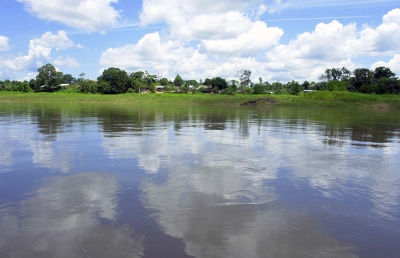
|
The Spanish soldiers who explored the region for the first time in 1541 battled native female warriors who fought bravely. The name the invaders gave to the river came from the Persian hamazan, meaning ‘those who fight together’ – also used in Greek mythology for outstanding women warriors. |
Before the conquest of South America, the Rio Amazonas had no general name; instead, indigenous peoples had names for the sections of the river they occupied, such as Paranaguazu, Guyerma, Solimões, and others.
In the year 1500, Vicente Yañez Pinzon, in command of a Spanish expedition, became the first European to explore the river, exploring its mouth when he discovered that the ocean off the shore was freshwater. Pinzon called the river the Rio Santa Maria de la Mar Dulce, which soon became abbreviated to Mar Dulce, and for some years, after 1502, it was known as the Rio Grande.
Pinzon’s companions called the river El Río Marañón. The word Marañón is thought by some to be of indigenous origin. This idea was first stated in a letter from Peter Martyr to Lope Hurtado de Mendoza in 1513. However, the word may also be derived from the Spanish word maraña; meaning a tangle, a snarl, which well represents the bewildering difficulties that the earlier explorers met in navigating not only the entrance to the Amazon, but the whole island-bordered, river-cut, and indented coast of what is now the Brazilian state of Maranhão.
The name Amazon arises from a battle that Francisco de Orellana had with a tribe of Tapuyas where the women of the tribe fought alongside the men, as was the custom among the entire tribe. Orellana derived the name Amazonas from the ancient Amazons of Asia and Africa described by Herodotus and Diodorus.
Credit: New World Encyclopedia
Picture Credit : Google



